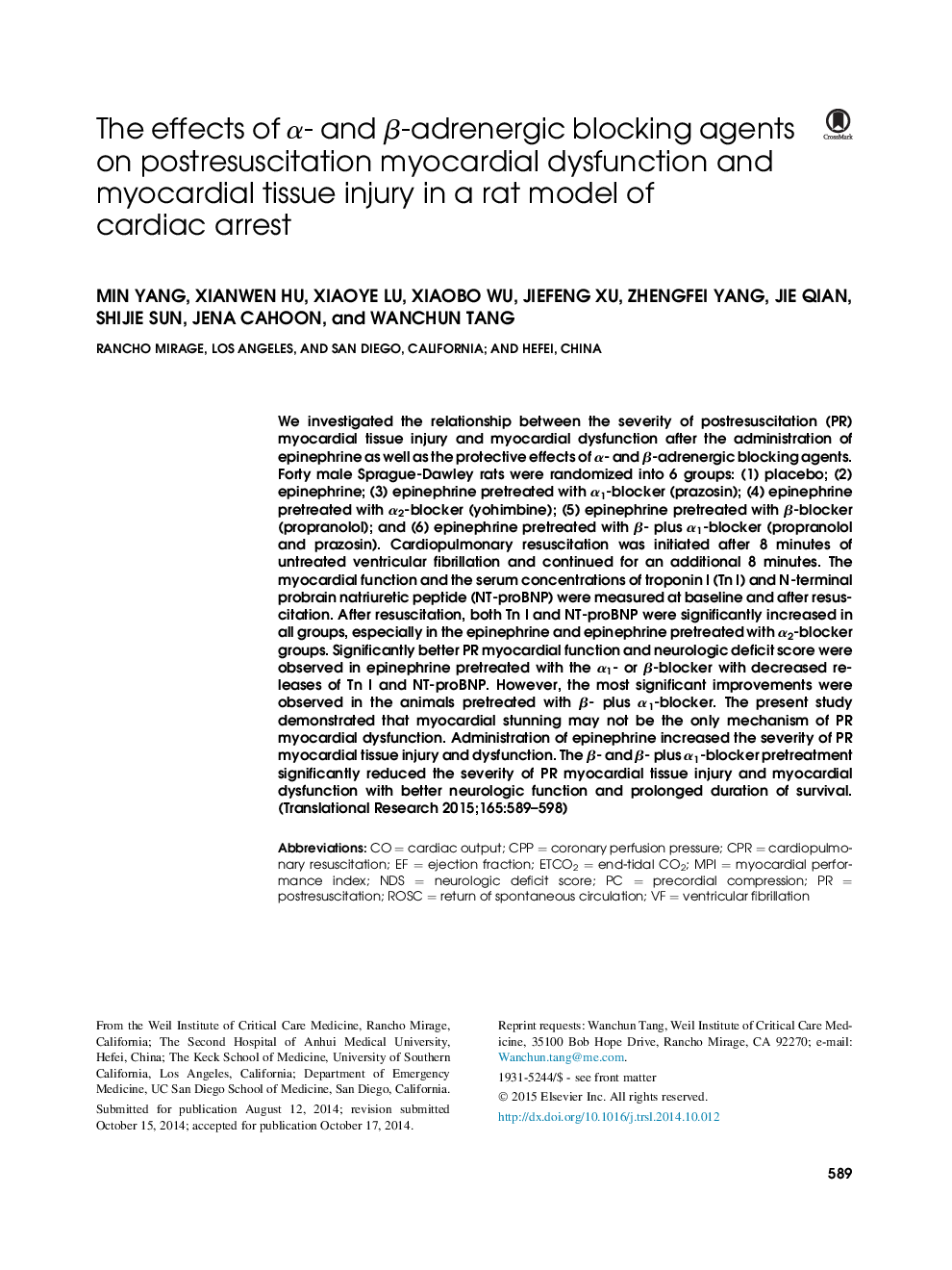| Article ID | Journal | Published Year | Pages | File Type |
|---|---|---|---|---|
| 3840422 | Translational Research | 2015 | 10 Pages |
We investigated the relationship between the severity of postresuscitation (PR) myocardial tissue injury and myocardial dysfunction after the administration of epinephrine as well as the protective effects of α- and β-adrenergic blocking agents. Forty male Sprague-Dawley rats were randomized into 6 groups: (1) placebo; (2) epinephrine; (3) epinephrine pretreated with α1-blocker (prazosin); (4) epinephrine pretreated with α2-blocker (yohimbine); (5) epinephrine pretreated with β-blocker (propranolol); and (6) epinephrine pretreated with β- plus α1-blocker (propranolol and prazosin). Cardiopulmonary resuscitation was initiated after 8 minutes of untreated ventricular fibrillation and continued for an additional 8 minutes. The myocardial function and the serum concentrations of troponin I (Tn I) and N-terminal probrain natriuretic peptide (NT-proBNP) were measured at baseline and after resuscitation. After resuscitation, both Tn I and NT-proBNP were significantly increased in all groups, especially in the epinephrine and epinephrine pretreated with α2-blocker groups. Significantly better PR myocardial function and neurologic deficit score were observed in epinephrine pretreated with the α1- or β-blocker with decreased releases of Tn I and NT-proBNP. However, the most significant improvements were observed in the animals pretreated with β- plus α1-blocker. The present study demonstrated that myocardial stunning may not be the only mechanism of PR myocardial dysfunction. Administration of epinephrine increased the severity of PR myocardial tissue injury and dysfunction. The β- and β- plus α1-blocker pretreatment significantly reduced the severity of PR myocardial tissue injury and myocardial dysfunction with better neurologic function and prolonged duration of survival.
